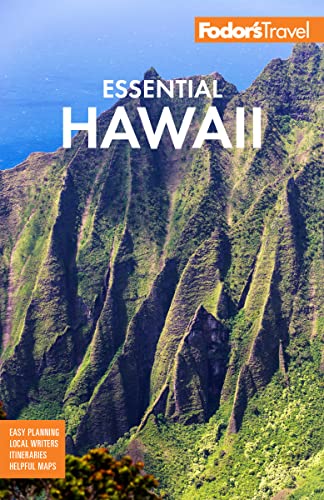Maunakea ("white mountain") offers the antithesis of the typical tropical island experience. Freezing temperatures and arctic conditions are common at the summit, and snow can fall year-round. You can even snowboard or ski up here. Seriously. But just because you can doesn't mean you'll want to. You should be in very good shape and a close-to-expert boarder or skier to get down the slopes near the summit and then up again in the thin air with no lifts. During the winter months, lack of snow is usually not a problem.
But winter sports are the least of the reasons that most people visit this starkly beautiful mountain. From its base below the ocean's surface to its summit, Maunakea is the tallest island mountain on the planet. It's also home to little Lake Waiau, one of the highest natural lakes in the world, though lately, the word "pond" is closer to the truth.
Maunakea's summit—at 13,796 feet—is the best place in the world for viewing the night sky. For this reason, the summit is home to the largest and most productive astronomical observatories in the world—and $1 billion (with a "B") worth of equipment. Research teams from 11 different countries operate 13 telescopes on Maunakea, several of which are record holders: the world's largest optical–infrared telescopes (the dual Keck telescopes), the world's largest dedicated infrared telescope (UKIRT), and the largest submillimeter telescope (the JCMT). A still-larger 30-meter telescope (TMT) had been cleared for construction and was slated to open its record-breaking eye to the heavens until it got delayed by some Native Hawaiian protests. It's since been cleared again for construction.
Maunakea is tall, but there are higher mountains in the world, so what makes this spot so superb for astronomy? It has more to do with atmosphere than with elevation. A tropical-inversion-cloud layer below the summit keeps moisture from the ocean and other atmospheric pollutants down at the lower elevations. As a result, the air around the Maunakea summit is extremely dry, which helps in the measurement of infrared and submillimeter radiation from stars, planets, and the like. There are also rarely clouds up here; the annual number of clear nights here blows every other place out of the water. And, because the mountain is far away from any interfering artificial lights (not a total coincidence—in addition to the fact that the nearest town is nearly 30 miles away, there's an official ordinance limiting certain kinds of streetlights on the island), skies are dark for the astronomers' research. To quote the staff at the observatory, astronomers here are able to "observe the faintest galaxies that lie at the very edge of the observable universe."
Teams from various universities around the world gather on an 18-month waiting list to get the chance to use the telescopes on Maunakea. They have made major astronomical discoveries, including several about the nature of black holes, the discovery of new satellites around Jupiter and Saturn, new Trojans (asteroids that orbit, similar to moons) around Neptune, new moons and rings around Uranus, and new moons around Pluto. Their studies of galaxies are changing the way scientists think about time and the evolution of the universe.
What does all this mean for you? A visit to Maunakea is a chance to see more stars than you've likely ever seen before, and an opportunity to learn more about mind-boggling scientific discoveries in the very spot where these discoveries are being made. For you space geeks, a trip to Maunakea may just be the highlight of your trip.
If you're in Hilo, be sure to visit the Imiola Astronomy Center, which is near the University of Hawaii at Hilo. It offers presentations and planetarium films about the mountain and the science being conducted there, as well as exhibits describing the deep knowledge of the heavens possessed by the ancient Hawaiians.






